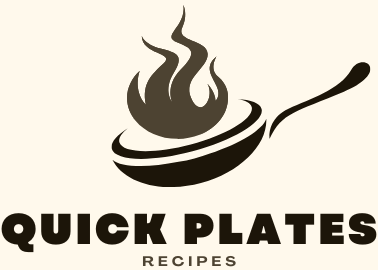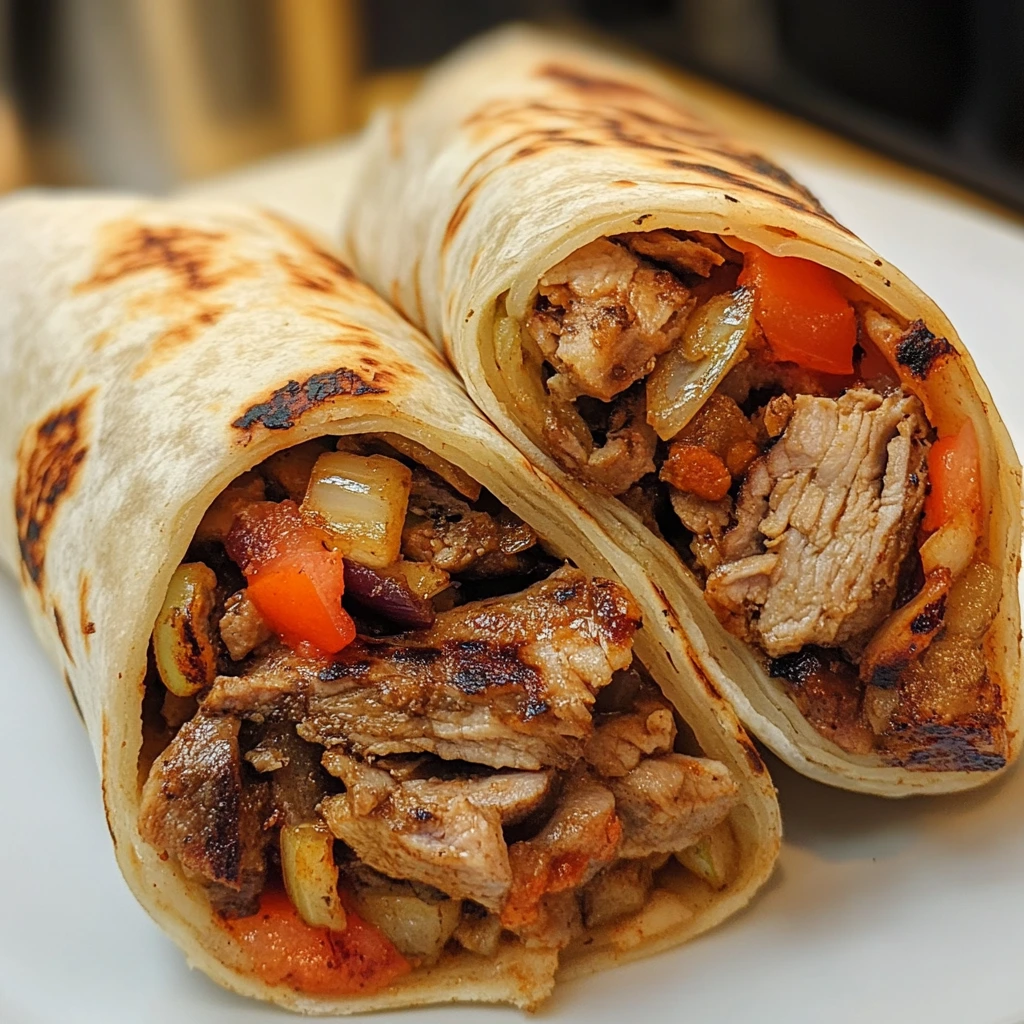If you love bold, savory street food, Homemade Shawarma is a must-try. This Middle Eastern classic is known for its juicy, spiced meat and rich flavors. The best part? You can easily recreate it at home. With a handful of spices and simple prep, you’ll enjoy a dish that rivals your favorite takeout. Whether you choose chicken, beef, or lamb, Shawarma delivers big on taste. It’s perfect for wraps, bowls, or serving with sides. Let’s dive into how to make Homemade Shawarma that’s juicy, delicious, and surprisingly easy.
What Is Shawarma and Why You’ll Love It
A Brief History of Shawarma
Shawarma has deep roots in Middle Eastern cuisine. It originated in the Ottoman Empire, where meat was slow-cooked on vertical rotisseries. Over time, the technique spread across the Levant and beyond.
Traditionally, lamb was used, but chicken, beef, and turkey became popular later. The name “Shawarma” comes from the Turkish word çevirme, meaning “turning,” which refers to the rotating spit used to cook the meat.
As people migrated, they brought Shawarma with them. It became a staple street food in cities around the world. Its flavorful marinade and rich aroma quickly won global fans.
Today, Shawarma is more than just food—it’s a cultural symbol. From Beirut to Berlin to Brooklyn, it brings communities together over a shared love for spice and flavor.
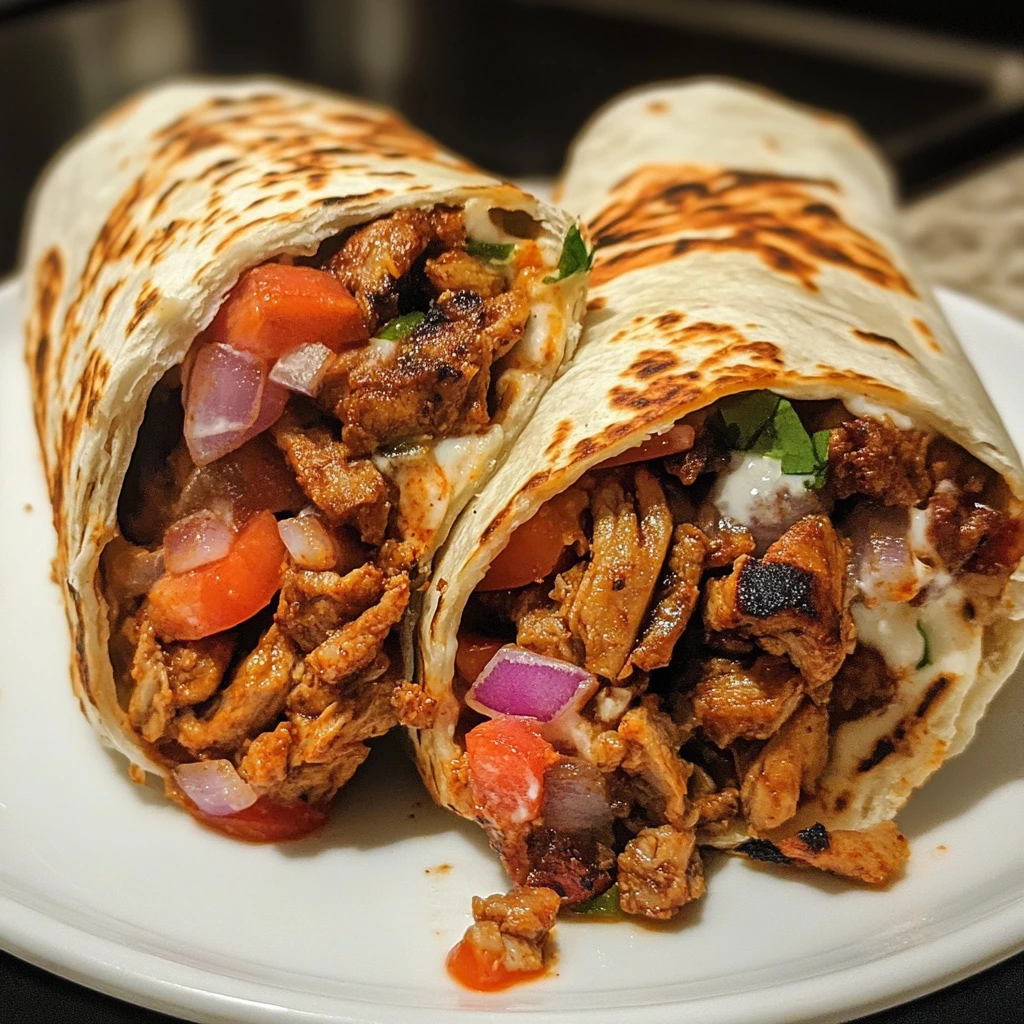
What Makes Homemade Shawarma So Special
Homemade Shawarma offers a level of freshness and customization you won’t get from takeout. You control the ingredients, spices, and cooking method. Each bite bursts with flavor because the meat is marinated deeply and cooked to perfection. The aroma alone can make your kitchen feel like a street food market.
You can choose your protein, adjust spice levels, and serve it with your favorite sides. There’s also something satisfying about slicing it yourself, fresh and hot. Unlike store-bought versions, Homemade Shawarma isn’t loaded with additives or preservatives. It’s real food, made with love.
Whether grilled, oven-roasted, or pan-seared, it stays juicy and tender. That’s why it’s a favorite for family meals or impressing guests. In the end, it’s more than a meal—it’s an experience.
Popular Types of Shawarma (Chicken, Beef, and Lamb)
Shawarma comes in many forms, but chicken, beef, and lamb are the most popular. Each offers its own unique flavor and texture.
Chicken Shawarma is the lightest and most commonly made at home. It absorbs marinades well and cooks quickly, staying juicy and tender.
Beef Shawarma delivers a bold, hearty taste. It’s perfect for those who enjoy richer flavors and a meatier bite. Thin slicing helps it stay tender.
Lamb Shawarma is full of deep, earthy flavor. It’s a traditional favorite in many Middle Eastern countries. The meat is often marinated overnight for extra richness.
You can grill, roast, or pan-sear any of these meats. Each version pairs beautifully with garlic sauce, tahini, and warm pita. Choosing your favorite is just part of the fun.
Ingredients You’ll Need for Authentic Homemade Shawarma
Core Spices and Marinade Basics
The heart of great Homemade Shawarma is its marinade. It’s what gives the meat its rich, layered flavor and deep aroma. A classic Shawarma spice mix includes cumin, paprika, turmeric, cinnamon, and allspice. These warm spices blend to create a bold, earthy profile.
Garlic, lemon juice, and plain yogurt are added for tang and tenderness. Yogurt helps break down the meat, making it extra juicy. Olive oil binds everything together and adds moisture. Salt and black pepper enhance all the other flavors.
Some versions add cayenne or chili flakes for a spicy kick. You can adjust the heat to match your taste. Marinate the meat for at least a few hours—overnight is best. The longer it rests, the deeper the flavor. This mix turns simple cuts of meat into something unforgettable.
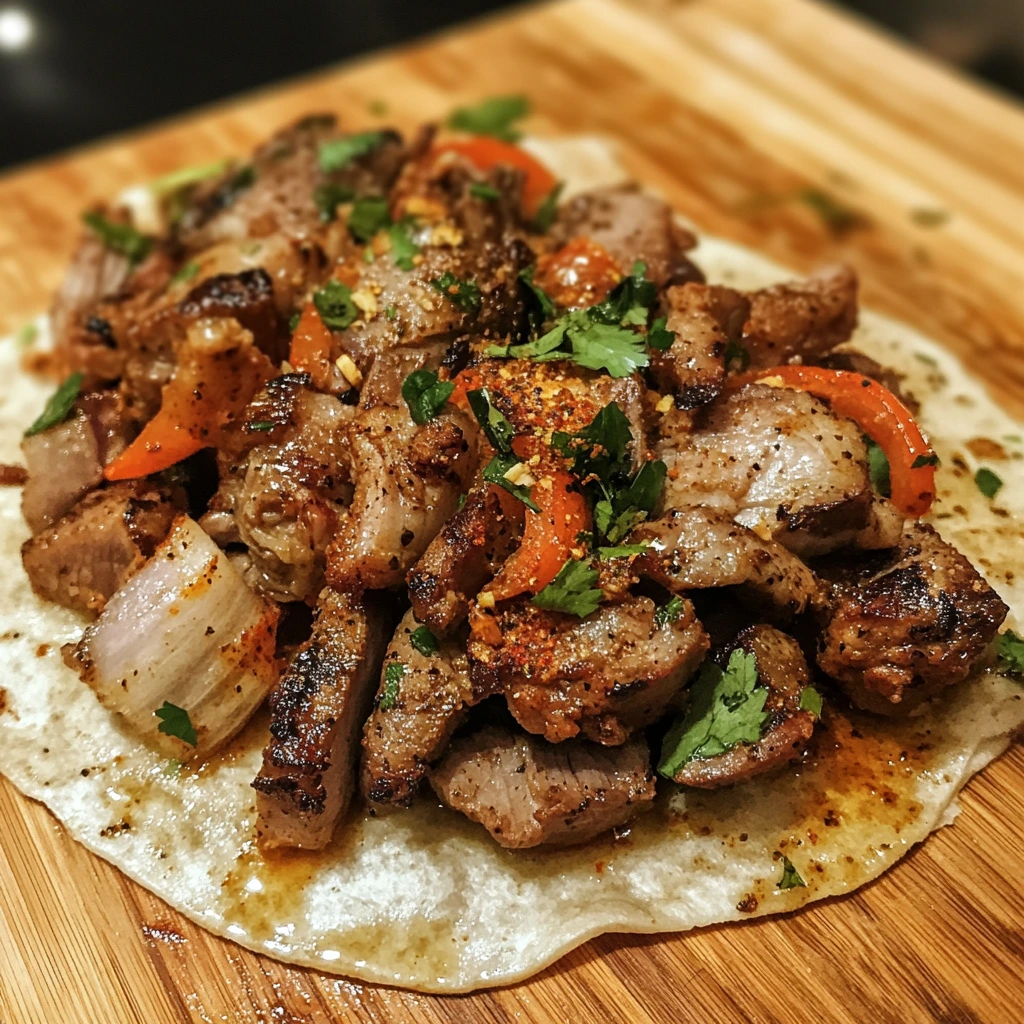
Meat Options and Substitutes
Traditional Shawarma uses lamb, beef, or chicken, each offering a unique flavor and texture. Chicken is the most popular option for home cooking. It’s affordable, easy to prepare, and absorbs marinade well.
Beef provides a richer, more robust taste. Choose cuts like flank or sirloin for tenderness and flavor. Lamb delivers deep, earthy notes and is often reserved for special occasions. It’s especially popular in authentic Middle Eastern recipes.
For a plant-based twist, try mushrooms, tofu, or seitan. These absorb spices beautifully and offer a satisfying bite. Jackfruit is another great vegan alternative. It mimics the shredded texture of meat when cooked.
Whatever option you choose, the marinade is what makes it truly Shawarma. With the right spices, even non-traditional proteins can shine.
Homemade Shawarma Sauces, Breads, and Extras
A great Homemade Shawarma is all about the finishing touches. The right sauce can elevate the dish to a new level. Garlic sauce (Toum) is the classic choice. It’s creamy, tangy, and has a bold garlic kick. Tahini sauce is another popular option. It’s smooth, slightly nutty, and adds depth.
For a bit of heat, drizzle hot sauce or chili paste over your Shawarma. When it comes to bread, pita is the most common. It’s soft, warm, and perfect for wrapping the filling. Flatbread can also be used for a slightly thicker bite.
Add some pickled vegetables for a tangy crunch, or serve with a fresh salad to balance out the richness. A side of fries completes the experience for a true street food feel.
How to Make Homemade Shawarma – Step-by-Step
Preparing the Marinade and Marinating the Meat
The marinade is crucial to achieving flavorful, tender Homemade Shawarma. Start by mixing yogurt, garlic, lemon juice, and a blend of spices like cumin, paprika, and turmeric. The yogurt helps break down the meat, making it juicy and tender.
Add olive oil for moisture and salt and black pepper to enhance the flavors. If you like heat, include cayenne pepper or chili flakes. Once your marinade is ready, coat the meat thoroughly. Massage the marinade into the meat, ensuring every piece is well-covered.
For the best flavor, let the meat marinate for at least 2–4 hours, but overnight is ideal. The longer it marinates, the more intense the flavor. Once marinated, your Shawarma is ready to cook. This step is what makes the meat melt in your mouth.
Homemade Shawarma Cooking Methods – Oven, Grill, or Stovetop
Homemade Shawarma can be cooked in several ways, depending on what you have at home. Each method gives a slightly different texture and flavor.
Oven cooking is the easiest and most convenient option. Spread the marinated meat on a baking tray and roast at high heat. You’ll get tender meat with crispy edges.
Grilling gives Shawarma a smoky, charred flavor. It’s perfect for summer cooking and adds depth to the spices.
Stovetop cooking works great if you don’t have an oven or grill. Use a hot skillet to sear the meat in batches. This method gives a juicy, slightly caramelized finish.
No matter which method you choose, don’t overcrowd the pan or tray. Let the meat cook evenly and develop that signature Shawarma texture.
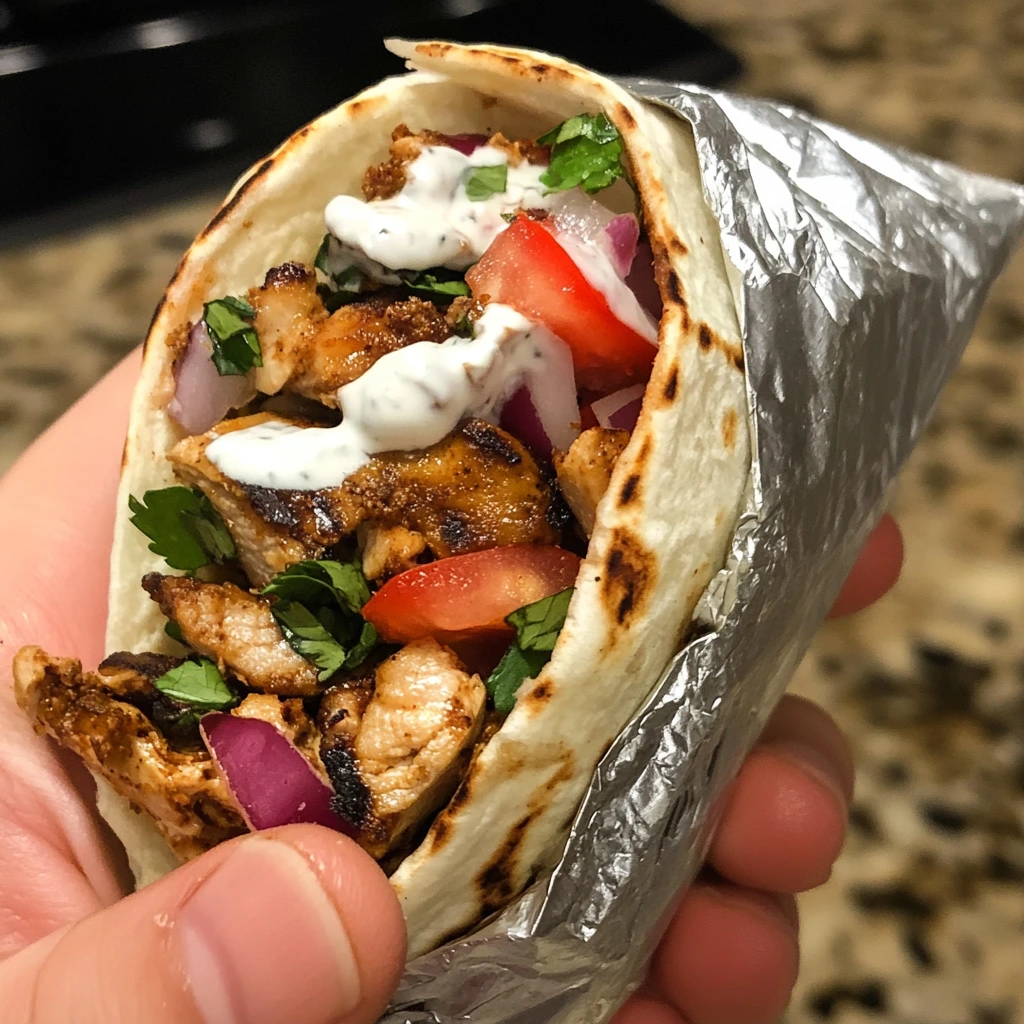
Slicing and Assembling Your Homemade Shawarma Wrap
Once your meat is cooked, let it rest for a few minutes. This helps retain its juices. Use a sharp knife to slice the meat thinly, against the grain. Thin slices give that classic Homemade Shawarma texture—tender, flavorful, and easy to bite.
Warm your pita or flatbread slightly so it’s soft and flexible. Lay down a generous spoonful of garlic sauce or tahini first. Then add the sliced meat.
Top with pickled vegetables, fresh lettuce, tomatoes, or onions for crunch and contrast. A dash of hot sauce can bring extra heat if you like it spicy.
Wrap it tightly to hold everything together. For a crisp finish, you can toast it lightly on a dry pan. Serve immediately and enjoy every juicy bite.
Homemade Shawarma Serving Suggestions and Delicious Pairings
How to Build the Perfect Homemade Shawarma Wrap
Building the perfect Homemade Shawarma wrap is all about balance. You want flavor, texture, and freshness in every bite. Start with a warm, soft pita or flatbread. Spread a layer of garlic sauce or tahini down the center. This adds creaminess and holds everything together.
Next, pile on your sliced Shawarma meat—make sure it’s juicy and evenly spread. Add crisp vegetables like shredded lettuce, cucumbers, onions, or tomatoes for a refreshing crunch.
Top it off with pickles for tang and a bit of acidity. If you enjoy spice, drizzle on some hot sauce or chili paste. Fold the sides in, roll tightly, and wrap it snugly. A quick press in a hot pan can add a golden finish. Serve warm and enjoy the layered flavor.
Side Dishes to Complete the Meal
Shawarma is satisfying on its own, but the right side dishes take it to the next level. Hummus is a classic choice. Its creamy texture and nutty flavor pair perfectly with spiced meat. Add a drizzle of olive oil and a sprinkle of paprika on top.
Tabbouleh, made with parsley, bulgur, and lemon, brings freshness and brightness to the plate. It balances the richness of the Shawarma. French fries are a popular street-style addition. You can even tuck them into the wrap for an authentic touch.
Other great options include baba ganoush, pickled turnips, or a simple cucumber yogurt salad. Each one offers contrast in taste and texture.
Mix and match your sides depending on the occasion. A few small dishes can turn your Homemade Shawarma into a full, satisfying meal.
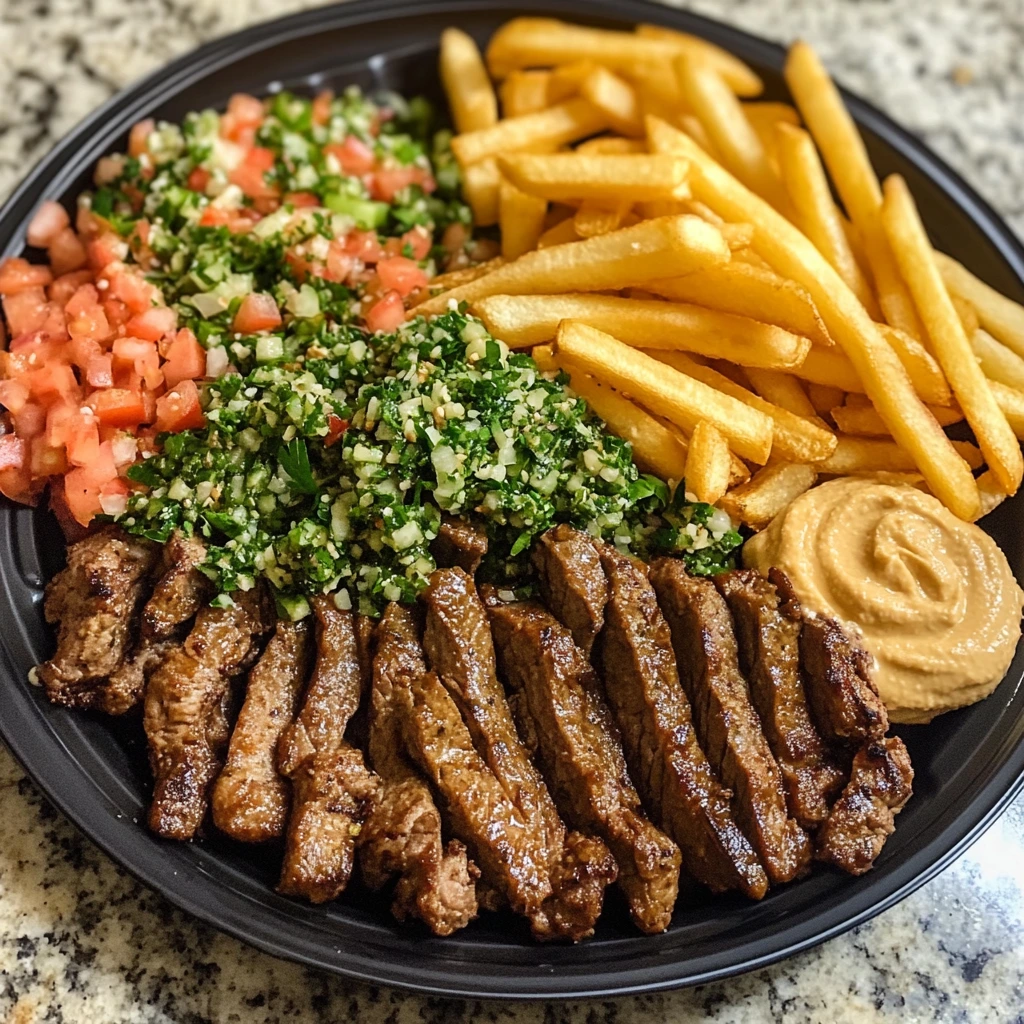
Tips for Serving a Crowd or Meal Prep
Homemade Shawarma is a great choice for gatherings or meal prep. It’s easy to scale, and most of the work can be done ahead of time. For a crowd, marinate a large batch of meat the night before. Use chicken thighs or beef strips for easier portioning.
Set up a build-your-own wrap station with sauces, breads, and toppings. Guests can customize their wraps just how they like. To save time, cook the meat in the oven on large trays. It stays juicy and can be kept warm in a low oven.
For meal prep, portion the cooked meat into containers with rice, salad, or flatbread. Store sauces separately to keep things fresh.
Homemade Shawarma also freezes well, making it perfect for future meals. Just reheat and assemble when you’re ready to enjoy.
Final Tips for Perfect Juicy Homemade Shawarma
Common Mistakes to Avoid
Even a simple Homemade Shawarma recipe can go wrong without the right techniques. Avoiding a few common mistakes can make a big difference.
Skipping the marinade time is a top error. Rushing this step leads to bland, dry meat. Let it sit for at least a few hours. Overcrowding the pan or tray is another issue. When meat steams instead of sears, it loses flavor and texture. Cook in batches if needed.
Using too little spice can result in a flat taste. Shawarma is known for bold seasoning—don’t be afraid to go generous. Cutting the meat too thick makes it harder to wrap and chew. Thin, even slices are key for that street-style feel.
With a little care, you can avoid these mistakes and enjoy amazing results every time.
Customizing Spice Levels and Flavors
One of the best things about Homemade Shawarma is the flexibility to match your taste. You’re in full control of the spice and flavor. If you prefer a milder dish, reduce the cayenne or skip it entirely. Add more yogurt or lemon juice to balance heat with tang.
For a bold, spicy kick, increase chili flakes, black pepper, or hot paprika. You can also blend in a bit of harissa or hot sauce. Sweeten the flavor with a touch of cinnamon or nutmeg for warmth. A pinch of clove adds depth without overpowering the dish.
Adjust the garlic and salt to suit your preferences. Taste the marinade before adding meat to ensure the balance feels right. Small changes can make a big impact, so feel free to experiment until it’s perfect for you.
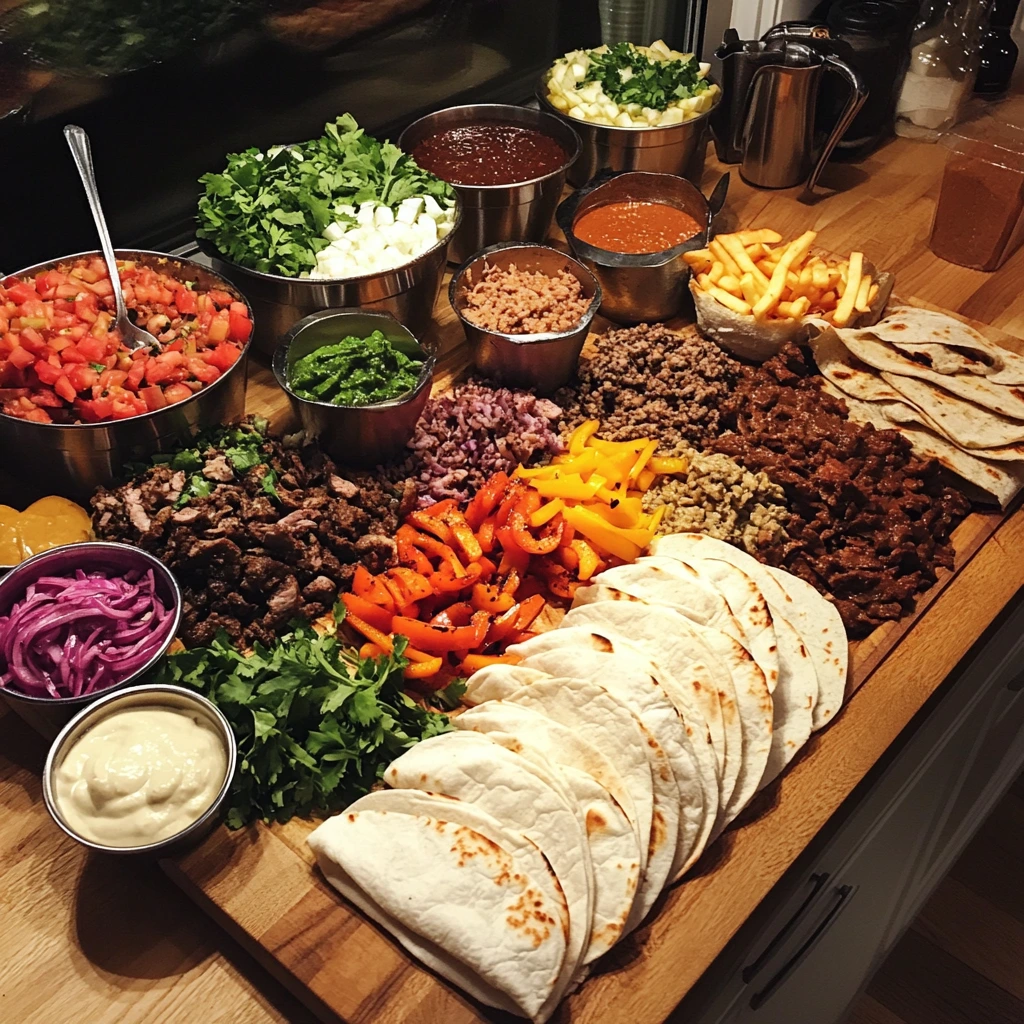
Storing Leftovers and Reheating Tips
Leftover Shawarma keeps well and still tastes great the next day. Store the cooked meat in an airtight container in the fridge. It stays fresh for up to four days. Keep sauces, breads, and toppings separate to maintain their texture and flavor. This also makes reheating easier and more flexible.
To reheat, use a skillet over medium heat. This brings back some crisp edges without drying the meat. Stir occasionally for even warmth. Avoid microwaving if possible—it can make the meat rubbery. If you must, use a microwave-safe cover and reheat in short bursts.
For larger portions, you can use an oven set to 300°F. Cover the meat with foil to prevent it from drying out. Freeze extra meat in small batches for quick future meals. Just thaw overnight in the fridge before reheating.
Conclusion
Homemade Shawarma is easier than it looks and incredibly rewarding. With the right spices and techniques, you can create bold, juicy flavors at home. Customize each wrap to match your taste—mild, spicy, or somewhere in between. Prep ahead, cook in batches, and enjoy all week long.
Whether you’re feeding family or hosting friends, Shawarma is a crowd-pleaser. It’s more than a meal—it’s an experience worth sharing. Now it’s your turn to try it. Your perfect Shawarma wrap is just a few steps away.
